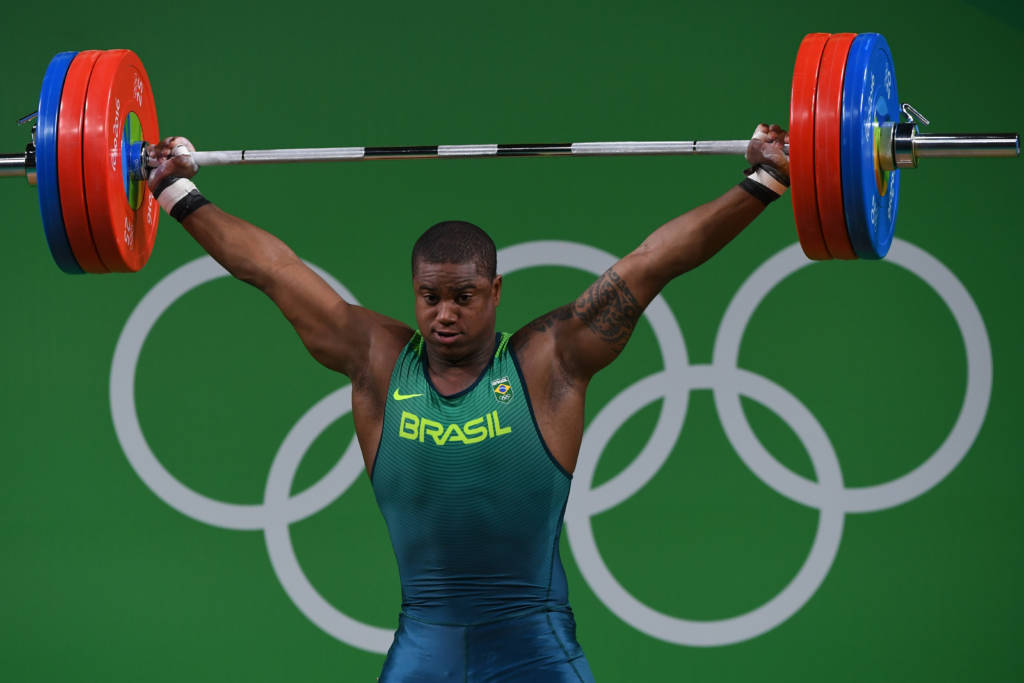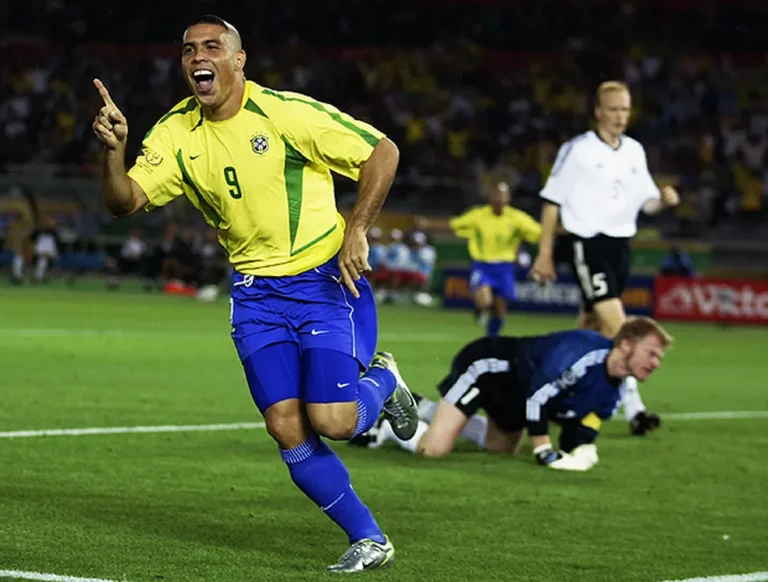All About Olympic Weightlifting
Weightlifting as a sport has a very rich and ancient history. It was one of the few sports included in the first Games Olympics modern buildings from 1896 in Athens, but its roots go back even further
In Ancient Greece, the lifting Weight training was practiced as a way of measuring strength and physical ability. Athletes lifted large rocks to demonstrate their strength, a practice that evolved over the centuries.
With the revival of the Olympic Games in the modern era, weightlifting was reintroduced as a sport that tested not only raw strength but also technique.
At the beginning of the 20th century, sport began to organize itself more formally, with the formation of federations and the standardization of rules. In 1920, weightlifting was reinstated into the Olympic Games on a permanent basis and has been an integral part of Olympic competition ever since.
Over the years, the sport has evolved to include different weight categories and techniques, such as the snatch and the clean and jerk, which are the two disciplines contested in the Olympic Games today.
browse the Content

Records
Olympic weightlifting records are testament to the incredible strength and technique of the athletes who compete in this sport at the Olympic Games. Each weight category has its own records for both men and women, and these records are frequently broken as athletes continue to push the limits of what is humanly possible.
Masculine
- Lasha Talakhadze (Georgia): Talakhadze holds the Olympic and world record in the super heavyweight category. He set a new Olympic record at the Tokyo 2020 Games, lifting a total of 488 kg (223 kg in the snatch and 265 kg in the clean and jerk).
- Behdad Salimi (Iran): In 2016, during the Rio Olympics, Salimi set an Olympic record in the snatch with a lift of 216 kg in the super heavyweight category, although he was unable to complete the clean and jerk in that session.
Lasha Talakhadze Who is it
Lasha Talakhadze is a Georgian weightlifter who has dominated the world stage in weightlifting, especially in the super heavyweight category. Born on October 2, 1993, in Zugdidi, Georgia, Talakhadze quickly established himself as one of the greatest lifters of all time due to his impressive records and achievements.
Lasha Talakhadze won the gold medal at the 2016 Olympic Games in Rio de Janeiro and repeated the feat at the 2020 Olympic Games in Tokyo, dominating the super heavyweight category.
He is the holder of several world records in the +109 kg category (previously known as +105 kg before category resets by the International Weightlifting Federation in 2018). At Tokyo 2020, he set the world record by lifting a total of 488 kg (223 kg in the snatch and 265 kg in the clean and jerk).
Talakhadze has been virtually unbeatable in international competition, winning multiple world and European championships. His strength, technique and consistency made him a legendary figure in the sport.
Lasha is known for his impeccable technique and his ability to execute lifts with extraordinary precision, even under great pressure. His impressive physical presence, combined with his technical ability, makes him an exceptional athlete in weightlifting.
Talakhadze's success and charisma brought greater visibility to weightlifting, inspiring a new generation of athletes in Georgia and around the world. His ability to break records previously considered unattainable has raised the bar for what is possible in the sport.
Lasha Talakhadze not only redefines the limits of weightlifting, but also serves as an inspiring example of dedication, discipline and excellence in the sport.
Behdad Salimi Who is it
Behdad Salimi is a former Iranian weightlifter, known for his extraordinary strength and for being one of the top competitors in the super heavyweight category. Born on December 8, 1989, in Ghaemshahr, Iran, Salimi quickly became one of the most recognized names in world weightlifting.
Salimi won the gold medal at the 2012 Olympic Games in London in the +105 kg category, establishing himself as one of the best weightlifters of his generation.
During his career, Behdad Salimi broke several world records. One of his most notable moments was at the 2011 World Weightlifting Championships, where he set a new world record in the clean and jerk with a lift of 214 kg. He also set a record in total, combining snatch and clean and jerk, with 464 kg.
Salimi also competed at the 2016 Rio de Janeiro Olympics, where he broke the Olympic record in the snatch with a lift of 216 kg. However, he faced controversy and disappointment during the throwing competition, where he was disqualified due to controversial decisions by the judges regarding the validity of his lifts.
Behdad Salimi was known for his powerful and effective technique, especially in the snatch, where his ability to generate a large amount of force in a short period was impressive.
His stage presence was commanding, and he was often praised for his ability to remain calm under pressure.
Salimi announced his retirement from competitive weightlifting in 2018, citing injuries and physical exhaustion as reasons for his decision. His legacy in sport is lasting, especially in Iran, where he is considered a national hero and an inspiration to many young athletes.
Behdad Salimi leaves behind a career marked by notable achievements and memorable moments that highlighted his strength, technique and competitive spirit.
Feminine
- Tatiana Kashirina (Russia): At the 2012 Summer Olympics in London, Kashirina set Olympic records in the super heavyweight category with 151 kg in the snatch and a total of 332 kg. Although their records have been surpassed in world competitions, they remain impressive Olympic landmarks.
- Hou Zhihui (China): At the 2020 Tokyo Games, Hou set a new Olympic record in the 49 kg category, lifting 210 kg in total (94 kg in the snatch and 116 kg in the clean and jerk).
Olympic weightlifting records are a fascinating aspect of this sport, showing how athletes are constantly surpassing themselves and setting new standards of excellence. These moments are not only highlights of the Olympic Games, but also significant milestones in the history of the sport.
Tatiana Kashirina Who is it
Tatiana Kashirina is a Russian weightlifter widely recognized for her exceptional achievements in the sport, especially in the women's super heavyweight category. Born on January 24, 1991, in Moscow, Russia, Kashirina quickly established herself as one of the best weightlifters in the world.
Tatiana Kashirina holds several world records in the +87 kg category. At the 2012 Summer Olympics in London, she set a new Olympic record in the snatch with 151 kg and a total of 332 kg, winning the silver medal. Although these records have since been surpassed, they highlight her lasting impact on women's weightlifting.
In addition to her Olympic silver, Kashirina has several gold medals from World and European Championships. She has dominated her weight class for many years, demonstrating superior consistency and technique.
Kashirina's career has also faced challenges, including exclusion from the Russian weightlifting team from the 2016 Summer Olympics due to doping concerns. However, she continued to compete and set records in other international championships.
Tatiana is known for her impeccable technique and her ability to perform lifts with precision and power. She is particularly strong in the snatch, where her explosiveness and technical control are evident. The combination of her physical strength and refined technique makes her one of the most formidable lifters of her generation.
Development of Olympic Sport
As weightlifting has developed as an Olympic sport, it has also seen significant changes in techniques and the way athletes prepare. At first, the sport did not differentiate between lifting techniques; athletes simply lifted the weight in any way possible.
Over time, the sport was formalized into two distinct techniques: the snatch and the clean and jerk. These techniques require not only strength, but also great skill in terms of timing, coordination and technique.
The snatch is a fluid movement where the lifter lifts the weight from the floor directly above the head in a single continuous movement. The clean and jerk is more complex, requiring the athlete to first lift the weight to their shoulders and then raise it over their head. This separation of techniques helped standardize the sport and allowed for fairer and more organized competition.
Over the years, weightlifting has also seen an evolution in weight categories, which are adjusted periodically to better reflect changes in the body composition and skill levels of athletes around the world.
These categories allow competitors of different sizes and strengths to compete on equal terms.
Furthermore, weightlifting as an Olympic sport has had a significant impact on the development of sports training and sports science. It has been a field of study for biomechanics, sports nutrition, sports psychology and training physiology.
Training for weightlifting today is highly specialized, with athletes following rigorous programs that aim to optimize strength, speed, technique and endurance.
Finally, weightlifting has contributed to inclusion and diversity at the Olympic Games, with categories now including female competitors since the 2000 Sydney Games.
The introduction of women's categories was a significant step towards gender equality in sport, providing a platform for female athletes to demonstrate their skills on a global stage
Hou Zhihui
Hou Zhihui is a Chinese weightlifter notable for her impressive performances in international competitions, especially the Olympic Games. Born on March 23, 1997, in Hunan Province, China, she quickly established herself as one of the top athletes in the women's 49 kg category.
Hou Zhihui won the gold medal at the Tokyo 2020 Olympic Games, dominating his category. During this competition, she set a new Olympic record in total, lifting 210 kg (94 kg in the snatch and 116 kg in the clean and jerk).
Hou has also been a dominant competitor at World Championships. She set several world records throughout her career, reflecting her excellent technique and athletic ability.
Hou has been consistently superior in various international competitions, winning multiple Asian and world titles. His ability to maintain high performance in high-profile events is a testament to his dedication and rigorous training.
Hou Zhihui is known for her exceptionally precise and efficient technique, which is crucial in the lightweight category where every kilogram makes a huge difference. Her ability to execute complex lifts with fluidity and control makes her stand out among her competitors.
As one of China's top female weightlifters, Hou Zhihui is part of a tradition of excellence in Chinese weightlifting, especially among women. Her success not only raises the bar for future female weightlifters, but also serves as an inspiration to young athletes around the world.
Hou's ability to achieve success on such a competitive stage is an example of the power of disciplined training and determination.
Hou Zhihui continues to be an influential figure in the world of weightlifting, and his journey into the sport will likely influence many future generations of athletes.
Understand the Rules of Olympic Weightlifting
Olympic weightlifting rules are designed to test athletes' strength, technique and skill in a fair and safe manner. The sport is divided into two main disciplines: the snatch and the clean and jerk. Here is a more detailed explanation of the rules for each of these modalities:
1. Snatch
- goal: The athlete must lift the weight from the ground to above the head in a continuous movement.
- Execution: The lifter starts with the weight on the floor and, in a single movement, raises the dumbbell directly above the head, with the arms fully extended. There are no pauses or intermediate movements.
- Assessment: The lift is considered successful if the athlete maintains control of the weight while having arms extended, legs straight and feet in the same line, without stepping outside the delimited circle. The judge gives a signal to the athlete to release the weight only when the position is correctly stabilized.
2. Throwing (Clean and Jerk)
- goal: Lift the weight in two movements: first to your shoulders and then above your head.
- Execution:
- First Movement (Clean): The athlete lifts the weight from the floor to the shoulders. The weight is received at the chest while the lifter squats under it before standing up.
- Second Movement (Jerk): From a standing position with the weight on their shoulders, the athlete makes a quick movement to throw the weight above their head, finishing with their arms fully extended.
- Assessment: As with the snatch, the lift is successful if the athlete maintains full control of the weight with arms extended and feet aligned. The judge will signal the athlete to release the weight after complete stabilization.
General rules
- Weight Categories: Athletes compete in specific weight categories, ensuring fair competition.
- Attempts: Each competitor has three attempts in each discipline. The best valid lift from each discipline is added together to form the athlete's total.
- Clothing: Competitors must wear approved attire that includes a singlet, appropriate footwear and any supportive accessories such as belts and bandages, if desired.
- Lack: A lift can be considered a foul for several reasons, such as pressing (pushing the weight upward after the initial movement), failing to maintain control, or moving the feet outside the bounded circle before receiving the judge's signal.
Olympic Weightlifting Fundamentals
Before we get into the heart of our topic, “Olympic lifting”, let’s understand a little about the fundamentals of this sport.
Olympic weightlifting is mainly made up of two movements: the snatch and the clean and jerk. In the snatch, the athlete lifts the bar from the ground to above the head in a continuous movement, while in the clean and jerk, the bar is first brought to the chest and then pushed upward.
The Importance of the Closed Period in Weightlifting
But what exactly is “Olympic closed lifting”? In simple terms, it is the period of rest and recovery that is strategically planned to help athletes recover from the wear and tear of intense competition and training. This period is crucial as it allows the body and mind to fully recover, preventing injuries and preparing the athlete for the subsequent training phases.
Impact of the closed season on Olympic performances
Have you ever wondered why some athletes seem to come back even stronger after a break? This is often due to effective planning of the “Olympic closed lift”. Athletes who take this time to fully recover and adjust their techniques often achieve surprising results.
Studies and analyzes of Olympic performances show that well-planned closed periods correlate with significant improvements in athletes' subsequent results.
Future perspectives
Looking to the future, the “Olympic closed lifting” will likely incorporate more scientific and technological innovations. Real-time biomechanical monitoring, advanced recovery techniques and personalized nutrition approaches are beginning to play more significant roles. These innovations have the potential to transform how athletes approach the off-season, making it more effective and tailored to their individual needs.
Final Thoughts and Encouragement
The “Olympic lifting” is more than just a break in an athlete’s training routine; It is an integral part of the training cycle that requires as much care and attention as the intense preparation phases. For aspiring young athletes and their coaches, understanding and respecting the importance of the closed season can be the secret to a long and productive career in sports.
As sports enthusiasts and followers of Olympic weightlifting, we should celebrate not only the visible achievements, but also the periods of silence and recovery that make those achievements possible.
Clear! Here is a conclusion that ties together all the points covered and ends the article on “Olympic closed lifting”.
Conclusion
Throughout this article, we explore the complexity and importance of “Olympic lifting,” a crucial component in preparing weightlifting athletes for high-level competition. We saw that the closed season is not just a time to rest the body and mind, but a strategic opportunity for technical improvement, physical recovery and mental strengthening.
We discuss the fundamentals of weightlifting, the structure and impact of the off-season, and how athletes and coaches utilize this period to maximize future performance. We also face the controversies and challenges associated with the closed season, including the difficulty of maintaining competitive shape and pace.
Additionally, we address the adaptation needed during unexpected events, such as the pandemic, which has forced athletes to rediscover and adapt their closed season practices.
The “Olympic closed lifting” proves to be more than a break; It is a period of essential transformation and growth. For athletes who aspire to reach and surpass their limits, effective closed season management may well be the key to success.
Therefore, for both athletes and enthusiasts who follow each lift, each record, it is essential to value not only the moments of glory, but also the periods of silence and preparation that make them possible.
We hope this article has provided in-depth insight into “Olympic lifting” and inspired a new appreciation for the science and strategy behind Olympic weightlifting.
May each athlete and coach find the ideal balance in their own training and defense cycles, leading to longer, healthier and more triumphant careers.







